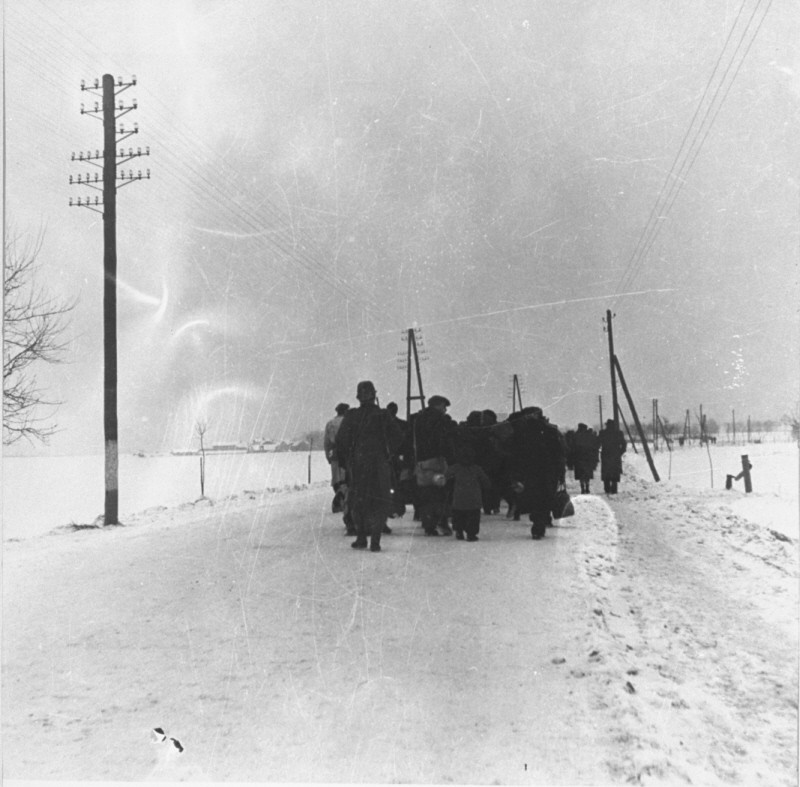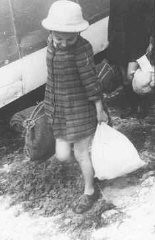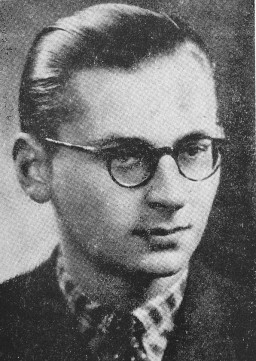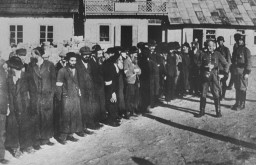
Media Essay
Browse an alphabetical list of curated media essays that explore various topics pertaining to the Holocaust and World War II. These essays give a brief overview of the topic and provide related media, including photographs, maps, oral histories, and films.
<< Previous | Displaying results 1-25 of 86 for "Media Essay" | Next >>
-
Tarnow - ID Cards/Oral Histories
Media EssayGermany occupied the Polish city of Tarnow in 1939. Deportations from Tarnow began in June 1942, first to the Belzec killing center. Following the June deportations, the Germans forced the surviving Jews in Tarnow, as well as Jews from nearby town...
-
Tarnow: Maps
Media EssayGermany occupied the Polish city of Tarnow in September 1939. Deportations from Tarnow began in June 1942, first to the Belzec killing center. Following the June deportations, the Germans forced the surviving Jews in Tarnow, as well as Jews from nea...
-
Tattoos and Numbers: The System of Identifying Prisoners at Auschwitz - ID Card/Oral History
Media EssayThe Auschwitz camp complex was the only location that issued identifying tattoos during the Holocaust. Only prisoners selected for forced labor were assigned serial numbers. Prisoners who were sent directly to the gas chambers were not registered...
-

-
The 11th Armoured Division (Great Britain) - ID Card/Oral History
Media EssayThe 11th Armoured Division liberated the Bergen-Belsen concentration camp in April 1945. When its soldiers entered the camp, they witnessed the horrific conditions that prisoners had faced. Here, survivors of Bergen-Belsen recount their experience...
-
The 11th Armoured Division (Great Britain) - Photograph
Media EssayThe 11th Armoured Division liberated the Bergen-Belsen concentration camp in April 1945. When its soldiers entered the camp, they witnessed the horrific conditions that prisoners had faced.
-
The Aftermath of the Holocaust - Oral Histories
Media EssayThe end of World War II brought new challenges for Jews who survived the Holocaust. In these oral histories, survivors share personal experiences after the war.
-
The Aftermath of the Holocaust: Personal Histories
Media Essay"I was afraid of this thing, I thought it's sacreligious, to laugh and to smile and go to...
-
The Armenian Genocide
Media EssayThe Armenian genocide refers to the physical annihilation of ethnic Armenian Christian people...
-
The Boycott of Jewish Businesses
Media EssayOn April 1, 1933—less than 3 months after rising to power—the Nazis staged a nationwide boycott of Jewish businesses. The boycott signaled the start of the Nazi movement to exclude Jews from all aspects of German soci...
-
The Boycott of Jewish Businesses - Photograph
Media EssayOn April 1, 1933—less than 3 months after rising to power—the Nazis staged a nationwide boycott of Jewish businesses. The boycott signaled the start of the Nazi movement to exclude Jews from all aspects of German so...
-
The Council for Aid to Jews: Żegota
Media EssayThe Council for Aid to Jews (codenamed “Żegota”) was an underground rescue organization of Poles and Jews. It operated in German-occupied Poland from December 4, 1942, to January 1945 and was supported by the Polish government-in-exile. Żegota’s main objective was to coordinate efforts to save Jews from Nazi persecution and murder. Its members worked clandestinely, often risking their own lives and the lives of their families and friends. Żegota supplied tens of thousands of Polish Jews with fake…

-
The Diverse Jewish Community of Interwar Lwów, Poland (now Lviv, Ukraine)
Media EssayBetween World War I and World War II, the multiethnic city of Lwów was in eastern Poland and home to one of the country’s largest Jewish communities. Jews made up about one-third of Lwów’s population, numbering around 100,000 people on the eve of World War II. The diversity of Lwów’s Jews was reflected in many aspects of their everyday lives. Most Jews in Lwów were multilingual and communicated in different languages, depending on the context. For example, many people spoke Yiddish at home,…
-
The Evian Conference
Media EssayIn July 1938, delegates from 32 countries met in Evian, France for a conference on the refugee crisis. The delegates expressed sympathy for the Jews who were seeking to flee Nazi persecution. Most countries, however, refused to admit more refugees.
-
The German Order Police in Poland
Media EssayGerman Order Policemen perpetrated many aspects of the Holocaust. During World War II, they were deployed to areas of Europe occupied by Nazi Germany. In Poland, the Order Police engaged in the Nazi regime's persecution of Jews and Poles.
